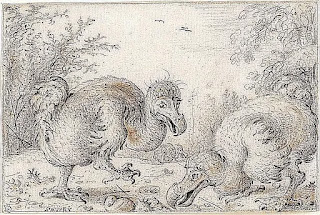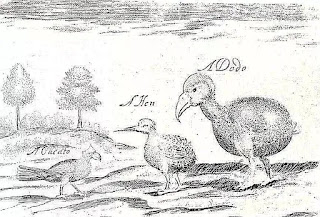20.05.25
Listen and say if the statements are true, false or not stated
19.05.25
Готовимся к контрольному чтению текста, начиная с №75
Задай вопрос * и запиши ответ:
ATTENTION!
Weather and Climate. How they influence plants, animals and humans
Endangered Species of animals and birds
Environment and its problems: reasons and decision
Discover Britain: how much do we know about the UK
England: visiting its regions.
Royal London: famous Kings and Queens
The World of Theatre – the World of W. Shakespeare
Scotland the beautiful
29/05/25
AUSTRALIA

15.04.25
для всех (6а, 6б, 6в)
для 6А💓
From: Jack@friend.uk
To: Friend@mail.ru
Subject: Hobbies
Hi! I love reading books, especially adventure stories. My favorite book is about a group of explorers who travel to a mysterious island. Do you like reading? What kind of books do you enjoy? Have you ever read a book that you didn’t like?
Напишите ему ответное письмо объёмом 60–70 слов, ответьте на 3 его вопроса. Оформите свой ответ в соответствии с правилами оформления письма. Не пишите адрес и дату. Не забудьте поблагодарить друга за полученное письмо.
1.04.25
21.03.25
Who rules the US?
The US Capitol
The White House
The US Congress
The US Supreme Court
18.03.25
13/03/25
The USA
COUNTRY AND PEOPLE
Geography
Yellowstone
Yosemite Valley
The Grand Canyon
11.03.25
Unit 16
Get ready for test reading, pay attention to the new words:
28/02/25
The USA
Christopher Columbus
25.02.25
Use these phrases to give interesting facts about Wales
21.02.25
look at
look for
look through
look after
look up (in)
look forward to Ving
look out!
13/02/25
Complex Object with different verbs 👌
Can you read this?
tuː ˈklaɪməz wɜːr ɪn ˈtrʌbᵊl ɒn ðə ˈmaʊntɪn. wʌn wɒz ˈbædli ˈɪnʤəd. ðeɪ ˈniːdɪd hɛlp. ˈlʌkᵊli, ðə ˈmaʊntɪn ˈrɛskjuː ˈsɜːvɪs keɪm ˈkwɪkli. ðeɪ wɔːkt əˈlɒŋ ðə pɑːθ ænd krɒst ə ˈmaʊntɪn striːm tuː riːʧ ðɛm. ðə ˈklaɪməz fɛlt ˈhæpi wɛn ðeɪ wɜː ˈfaɪnəli ˈrɛskjuːd.
Two climbers were in trouble on the mountain. One was badly injured. They needed help. Luckily, the Mountain Rescue Service came quickly. They walked along the path and crossed a mountain stream to reach them. The climbers felt happy when they were finally rescued.
12/02/25
Complex Object с глаголами чувственного восприятия
Источник контента: https://easyspeak.ru/blog/vsyo-o-grammatike/complex-object-s-glagolami-vospriyatiya#1
Источник контента: https://easyspeak.ru/blog/vsyo-o-grammatike/complex-object-s-glagolami-vospriyatiya#1
Источник контента: https://easyspeak.ru/blog/vsyo-o-grammatike/complex-object-s-glagolami-vospriyatiya#1
Источник контента: https://easyspeak.ru/blog/vsyo-o-grammatike/complex-object-s-glagolami-vospriyatiya#1
Источник контента: https://easyspeak.ru/blog/vsyo-o-grammatike/complex-object-s-glagolami-vospriyatiya#1
Источник контента: https://easyspeak.ru/blog/vsyo-o-grammatike/complex-object-s-glagolami-vospriyatiya#1
Combine the sentences using the Complex Object.
Example:
I felt something hard. It hurt my leg. -> I felt something hard hurt my leg.
I saw Mike. He was entering the house. -> I saw Mike entering the house.
- They didn’t notice us. We passed by.
- Mike heard Sam. She was playing the violin.
- I felt her hand. It was shaking.
- I heard them. They were arguing.
- We many times heard him. He told this story.
8/02/25
Употребление модальных конструкций have to и have got to
Have to и have got to переводятся, как должен, приходится, необходимо, нужно. В отличие от большинства модальных глаголов, эти конструкции изменяются в зависимости от лица и числа подлежащего, а также имеют формы настоящего, прошедшего и будущего времени.
Have to употребляется
- для выражения необходимости действия ввиду обстоятельств:
Molly has to write many letters as she has a lot of friends abroad.
Greg had to do much during the month he stayed in his country house.
- вместо must в тех временных формах, которых must не имеет, то есть в прошлом и будущем времени:
You'll have to take a taxi if you don’t want to miss the train.
I had to send for the doctor as the child was running high temperature.
Разница в употреблении have to и have got to.
Модальные конструкции have to и have got to можно считать взаимозаменяемыми. Единственная разница заключается в том, что have to обычно используется для выражения постоянной, регулярной, привычной, рутинной необходимости, тогда как have got to используется для выражения единичной необходимости:
Fred has to get up every morning.
Fred has got to get up early tomorrow morning.
Вопросительная и отрицательные формы have got to практически не употребляется в американском варианте английского языка. В американском английском have got to употребляется в исключительно в Present Simple. Многие формы have got to являются потенциально возможными, но не употребляемыми в реальной речевой ситуации.
7.02.25
Complete the sentences:
1. Scotland is a country..
2. It is divided...
3. The capital...
4. Another large and famous city of Scotland is ...
5. ... is the heart of ...
6. Edinburgh is rather ... but ...
7. It has a long ...
8. The most interesting parts of ...
9. The Castle ...
10. Holyrood Palace ...
11. The Royal Mile
12. The Cannongate ...
13. The Edingburgh military tattoo...
14. The monument to the dog Bobby....
15. Princess Street...
16. The Scott Monument...
4/02/25
1. Edinburgh 👀👂
2. Edinburgh - watch a video👀👈
3. Edinburgh - video trip 👀💓
4. Edinburgh - an almost 3hour video of a walking tour 👀👌
31.01.25
King Charles III reciting "My Heart's in the Highlands"👂👀
Complex Object with MAY and LET
25.01.25
King Charles III reciting "My Heart's in the Highlands"👂👀
24.01.25
Ask true special questions to the underlined words:
Most of his plays were performed in the New Globe Theatre built on the bank of the River Thames.
In 1613 he stopped writing and went to live in Stratford where he died in 1616
22.01.25
Complete the sentences, use ex 18 p 11:
1. William Shakespeare was a ... and ... .
2. He was born ... (when, where, to whom).
3. His mother was a ... . His father was a ... .
4. William went to a ... and had ... .
5. While still a teenager, William ... .
6. Shakespeare and his wife had ... .
7. In 1587 ... .
8. In London ... .
9. Most of his plays ... .
10. In 1613 ... .
11. His plays are still ... .
Speak about W. Shakespeare and his life.
09.01.25
https://englishmix.ru/grammatika/nelichnye-formy-glagolov/complex-object
What do you want these people to do? 👈
25/12/24
Make your New Year's Resolutions
Повторяем песни к 24.12
24/12/24
Participle I and II
Nessie
Have you ever heard of the Loch Ness Monster? Many people believe that there is a huge animal 1.(living/lived) in Loch Ness in Scotland.
The animal is about 50 metres long 2.(including/included ) its tail. Nobody knows anything about its 3.(eating / eaten) habits. There are some photos of the animal 4.(taking/ taken) by different people 5.(visiting/ visited) the lake, but nobody can prove that they are real.
This animal 6. (giving/ given) the nickname Nessie has been one of the greatest tourists attractions to the area for years. Expeditions 7.(sent / sending) to Scotland tried very hard to find and catch Nessie. And so did individuals 8.(looking/ looked) for the animal. But there has been no result yet.
Nessie is still a great mystery. Very few things 9.(knowing/ known ) about Nessie are: it has a long and thin neck like a giraffe’s, its head is quite small and looks like a horse’s, its colour is dark yellow and its habitat is the deepest and the coldest part of the lake.
17.12.24
Вставьте so, such (a / an):
- My Dad was ___________ angry that I knew I’d better disappear for a while.
- The journey was _________ long, that we wanted to return.
- They were __________ beautiful earrings that I decided I had to get them.
- It was ____________ windy that they couldn’t stand up!
- Her pies were ___________ delicious, that I asked for another helping.
- They are _________ noisy neighbors that we can’t sleep at night.
- They had ___________ wonderful holiday in Italy.
- It was ___________ waste of time!
- The film was _______ boring!
- The water in the rivers is ________ dirty.
- That had __________ strong effect on me!
- She had ____________ bad headache that she went to lie down for a while.
- It was ___________ lovely party!
- He is __________ interesting person!
- Everyone had __________ good time when we went cycling that we agreed to go again.
- Edward and Rose used to be __________ good friends.
- The tornado was ___________powerful that the town was destroyed.
14/12/24
06.12.24
REPORTED SPEECH



Complete the sentences and change to reported speech.
- I said, "The game won't be so easy".
I said that the game so easy. - She said, "I can see the Eiffel Tower from here":
She said that the Eiffel Tower from . - He asked me, "Did you see John yesterday?"
He asked me John the day before. - Dad said, "Don't drive so fast !"
Dad told me so fast. - My friend said, "I will have to go to London next week."
My friend said that he/she to London . - The doctor told her, "Don't smoke any more cigarettes!"
The doctor told her any more cigarettes. - The boy asked, "Can we go out if the rain stops?"
The boy wanted to know out if the rain . - I said, "The film will be very interesting."
I said that the film very interesting. - She asked us, "Who do you normally visit on Sundays?"
She wanted to know on Sundays. - The instructor told us , "Tennis is not an easy game to play.
The instructor told us that tennis an easy game to play. - Ann asked Jim, "Please close the door."
Ann asked Jim the door. - Jack told us, "I have been enjoying my new job ".
Jack told us that he new job.


👉 to the north (south, east, west)
/ˈæk.sənt/
/mes/
/koʊˌɑː.pəˈreɪ.ʃən/ /səˈsaɪ.ə.ti/
/ˈɡləʊ.bəl/
/kæn/
/ˈkraɪ.sɪs/
/spɔɪl/
/tɜːm/
/dɪˈzɑː.stər/
/klɪər/
/preɪz/
/paɪl/
/ˈen.ə.dʒi/
/bɪt/
/ˈpɜː.sən.əl.i/
1. a strange accent
2. global problems
3. ecological crisis
4. international
5. a school term
6. clear the table / the room
/ the rubbish from
7. a pile of books
8. a bit hungry
9. in a mess
10. a sports society
11. a can of pepsi
12. to can vegetables
14. spoil the evening
15. praise the pupil / the
child / the winner
16. a terrible disaster
фразы для монологического
высказывания
вступление:
I’d like to tell you about...
I’d like to describe…
My topic is…
I want to give a (short) talk about…
основная часть:
I’d like to begin by saying
that …
Let me start /
finish with…
Another point is that…
As I was saying…
First / second / next / finally…
заключение:
In conclusion,…
I’ve come to the end of my talk, thank you for
listening.
That’s all I’ve got to say.
I’m ready for any
questions now.
1. The Dodo Bird Lived on the Island of Mauritius
Sometime during the Pleistocene epoch, a badly lost flock of pigeons landed on the Indian Ocean island of Mauritius, located about 700 miles east of Madagascar. The pigeons prospered in this new environment, evolving over hundreds of thousands of years into the flightless, 3-foot-tall (.9 m), 50-pound (23 kg) dodo bird, which was probably first glimpsed by human beings when Dutch settlers landed on Mauritius in 1598. Less than 65 years later, the dodo was completely extinct; the last confirmed sighting of this hapless bird was in 1662.
2. Until Humans, the Dodo Bird Had No Predators
It takes a lot of energy to maintain powered flight, which is why nature favors this adaptation only when it's absolutely necessary. After the dodo bird's pigeon ancestors landed on their island paradise, they gradually lost their ability to fly, at the same time evolving to turkey-like sizes.
Secondary flightlessness is a recurrent theme in bird evolution and has been observed in penguins, ostriches, and chickens, not to mention the terror birds that preyed on South American mammals only a few million years
Ironically, considering how indiscriminately they were clubbed to death by Dutch settlers, dodo birds weren't all that tasty. Dining options being fairly limited in the 17th century, though, the sailors who landed on Mauritius did the best with what they had, eating as much of the clubbed dodo carcasses as they could stomach and then preserving the leftovers with salt.
There's no particular reason the meat of the dodo would have been unsavory to human beings; after all, this bird subsisted on the tasty fruits, nuts, and roots native to Mauritius and possibly shellfish.
WHY ARE ANIMALS IN
DANGER?
disappear appear
nature natural
naturally
fast
faster the fastest
certainly
because of
take care of
empty land
move rivers
a newcomer
be afraid of
the Galapagos
Islands
nowhere
make money from
an animal coat
= the fur or hair on animals’ body
Make sentences in the passive in the given tense !
1. BMW’s – make – in Germany (PRESENT SIMPLE)
2. English – speak – in this shop (PRESENT SIMPLE)
3. The oldest house – build – in 1575 (PAST SIMPLE)
4. The bridge – repair – last year (Past SIMPLE)
5. The trees – cut down – last winter (PAST SIMPLE)
6. The picture – paint – tomorrow (FUTURE SIMPLE)
7. The TV – fix- three days ago (PAST Simple)
8. The cupboard – repair – yesterday (Past SIMPLE)
9. The car – find – in the garage (PAST SIMPLE)
10. Breakfast – serve – between 7 and 9 (PRESENT SIMPLE)
11. The dog – call- Rover (PRESENT SIMPLE)
12. The meeting – hold – in my office (PRESENT SIMPLE)
13. The street – close – because of snow (PAST SIMPLE)
14. The banks – close – in two days (FUTURE – SIMPLE)
15. Hundreds of books – write – every year (PRESENT SIMPLE)
16. After the accident – Joe – take – to the hospital (PAST SIMPLE)
17. The cap – find – in the corner (PAST SIMPLE)
18. The robber – not find – by the police – yesterday (PAST SIMPLE)
19. The game– finish– in the evening (FUTURE SIMPLE)
20. Different types of cameras – use - in Russia (PRESENT SIMPLE)
26.09.24
The Brief Overview
Weather is a specific event—like
a rainstorm or hot day—that happens over a few hours, days or weeks. Climate is the average weather conditions in a place over 30 years or more. NASA has observed that Earth's climate is getting warmer.
climatekids.nasa.weather-and-climate (follow the link to learn more)
21/09/24
Let's revise grammar tenses
Д/З на 23.09.24
16.09.24
A typical day
It's usually rainy but warm in spring. Sometimes it can be sunny and cloudy. Mornings are seldom misty. The temperature is often above zero.
14.09.2024
Д/З на 16.09:
уч. с. 10 №12, 13 - к диктанту, упражнение ниже письменно ( написать формы глаголов)
12.09.24
Д/З на 14.09
уч. с. 9 № 9а - уметь читать правильно, № 9b - выучить наизусть, №10* ( 5 предложений), №12+№13, с. 10 - записать новые слова
Принести тетради для контрольных работ!
a degree - градус
above zero - выше ноля
below zero - ниже ноля
It's 10 degrees above / below zero.
It's zero (degrees).
10.09.24
Д/З на 12 09 :
used to (письменно)
Д/З на 11.09:
Ребята, моя группа, повторяем конструкцию used to ( раньше что-то делали часто, а теперь нет) В учебнике с.7 №5 устно, АВ №4* ( фото упражнения)*
Когда используют конструкцию used to
used to используют, когда хотят рассказать о своей привычке в прошлом, т. е. действиях, которые мы регулярно совершали когда-то, но теперь уже нет. Причем это касается как плохих, так и хороших привычек.
I used to overeat all the time. — Раньше я постоянно переедал.
He used to be late for work, even though it threatened with dismissal. — Он раньше опаздывал на работу, несмотря на то, что это грозило увольнением.
When I was young, I used to jog every morning and lead a healthy lifestyle. — Когда я была молодой, я бегала каждое утро и вела здоровый образ жизни.
А еще глагол used to будет полезен, чтобы рассказать об актуальных в прошлом ситуациях или действиях.
She used to have trouble sleeping, so she had to take sleeping pills. — У нее были проблемы со сном, поэтому ей приходилось принимать снотворное.
I used to be an artist, but it didn’t work out. — Раньше я был художником, но не сложилось.
Our neighborhood used to be quiet until 3 new bars opened nearby. — Наш район был спокойным, пока рядом не открыли 3 новых бара.
Как строить предложения с глаголом used to
Утвердительное
Подлежащее + used to + Infinitive
I used to learn Japanese.
Отрицательное
Подлежащее + didn’t use to + Infinitive
I didn’t use to learn Japanese.
Вопросительное
Did + подлежащее + use to + Infinitive
Did you use to learn Japanese?
7.09.24



1.Disagree:
EX:Crocodiles swam in cold rivers.
Crocodiles didn’t swim in cold rivers.
1. Tigers ate many sweets yesterday.
2. Cats played with parrots in the past.
3. Dogs ate mice 2 days ago.
4. Crocodiles drank tea yesterday.
5. Babies spoke English.
6. The boy cleaned your room yesterday.
7. They visited your school last week.
8. You played puzzles in the park.
9. Your friend broke a pencil.
10. We had six lessons yesterday.
2.Complete the sentences:
1. You ____ school at 2 o’clock yesterday [leave].
2. She ____ to the cinema with you sister [go].
3. I ____ a tiger in the Zoo [see].
4. They _____ you in the garden [help].
5. Ann ____ home at 3 pm last Sunday [come].
6. Children ____ TV much yesterday [watch].
7. I ____ your bag yesterday [take].
8. We ____ our homework at 5 yesterday [do].
9. Last week you ____ me your cat [give].
10. Last summer we ____ in the Black Sea [swim].
3. Ask general questions:
1. His cats drank much milk yesterday.
2. You got ‘’5’’ at the last English lesson.
3. Her classmate played tennis last summer.
4. Children drank mineral water last summer.
5. Our sister wrote many tests.
6. My uncle bought a car last winter.
7. Nick went to school 2 years ago.
8. Policemen worked last Sunday.
9. You enjoyed my party last month.
10. Your mother helped you yesterday.
4. Fill in WAS or WERE:
It ____ cold yesterday.
The teachers ____ at the disco.
My friend and I ____ in Moscow.
Nick ____ at the stadium.
The tiger ____ at the Zoo last year.
Her room ____ dirty yesterday.
It ____ Sunday yesterday.
We ____ near the lake.
I ____ at the café yesterday.
You ____ at the coffee shop last Sunday.
Put the verbs into the correct form.
- 1.Danny and Pam __________ (go) to the shopping mall every Sunday.
- 2.Lucy ___________ (finish) her homework 2 hours ago.
- 3.I always ______________ (do) my homework.
- 4.I _____________ (eat) hamburger yesterday.
- 5.She often _________ (drink) tea in the morning.
- 6.I _____________ (swim) in the sea last summer.
- 7.Mom ______________ (walk) the dog yesterday.
- 8.Children sometimes ______________ (wash) the dishes.
- 9.My friends ________________ (visit) me every day.
- 10.Rosy _______________ (write) the Math test 2 days ago.
- 11.We _____________ (not learn) the rule yesterday.
- 12.Sam ______________ (not read) every day.
- 13.Ruby and Rudy _______ often ________ (not walk) together.
- 14.Dan and Tom _______________ (not see) me 2 days ago.
- 15.He ______________ (not drive) the car on Sundays.
- 16.Mary ________________ (not buy) a house last year.
- 17.__________ you __________ (sing) a song yesterday?
- 18.__________ children __________ (wear) the uniform?
- 19.__________ Robert usually __________ (draw) well?
- 20._________ you __________(find) a teacher 2 lessons ago?
- 21.________ Perry ____________ (like) his parents?
- 22. _______ William and Sally _______ (meet) last weekends?





/TAM_0202-81297ba1c3fe4922bcf72bc9ad61120b.jpg)





















































Комментариев нет:
Отправить комментарий